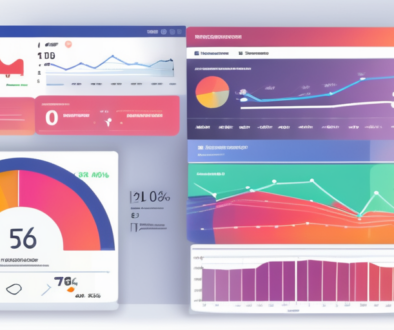How to Run Facebook Ads: A Comprehensive Guide
In today’s digital marketing landscape, Facebook Ads have emerged as a powerful tool for businesses to reach their target audience. This comprehensive guide will walk you through everything you need to know to create effective Facebook Ads that can drive engagement and conversions.
Understanding Facebook Ads
To maximize the effectiveness of your advertising efforts, it’s essential first to understand what Facebook Ads are and how they function within the platform. Facebook Ads are paid messages from businesses that appear in users’ news feeds and in the right-hand column of Facebook pages. These ads can be targeted based on user demographics, interests, and behaviors, which allows businesses to reach their ideal customers more effectively.
The Importance of Facebook Ads
Facebook boasts over 2.8 billion monthly active users, making it one of the largest social media platforms available. This incredible reach provides businesses unparalleled opportunities to connect with a diverse audience. Effective Facebook Ads can:
- Increase brand awareness
- Drive traffic to your website
- Boost sales and conversions
- Generate leads and collect email addresses
Thus, investing time and resources into Facebook advertising can yield significant returns for your business. Moreover, the platform’s sophisticated analytics tools allow advertisers to track the performance of their ads in real-time, enabling them to make data-driven decisions and optimize their campaigns for better results. This level of insight is crucial in today’s fast-paced digital landscape, where understanding audience behavior can be the key to staying ahead of the competition.
Different Types of Facebook Ads
Facebook offers a variety of ad formats, allowing businesses to choose the best fit for their target audience and business goals. Some of the most common types include:
- Image Ads: Simple ads featuring a single image.
- Video Ads: Ads that utilize short videos to engage users.
- Carousel Ads: Ads that showcase multiple images or videos in a single ad.
- Slideshow Ads: Ads that create video-like experiences using a series of images.
- Collection Ads: Combines a video or image with product images, allowing users to shop directly from the ad.
Understanding the different types of Facebook Ads will help you select the right format to reach your campaign objectives effectively. Additionally, Facebook’s targeting options allow you to refine your audience based on various criteria, such as location, age, gender, and even specific interests or behaviors. This granularity means that you can tailor your messaging to resonate with different segments of your audience, increasing the likelihood of engagement and conversion. Furthermore, the ability to retarget users who have previously interacted with your brand can significantly enhance your advertising strategy, ensuring that your message reaches those who are already familiar with your offerings.
Setting Up Your Facebook Ad Account
The first step to running Facebook Ads is to set up your advertising account. This is managed via Facebook Ads Manager, a robust tool that handles all aspects of ad creation, monitoring, and optimization.
Navigating the Facebook Ads Manager
To access the Ads Manager, you’ll need a Facebook Business account. Once you log in, you will find a dashboard that provides insight into your campaigns’ performance, and from where you can create new ads and manage your budgets. Familiarization with this interface is crucial, as it houses all the vital features required for advertising.
Key functions available in the Ads Manager include:
- Campaign Management
- Performance Analytics
- Audience Targeting Options
Taking the time to explore the Ads Manager thoroughly will make the ad creation process much smoother down the line. Additionally, the Ads Manager offers a variety of tools to help you refine your strategies, such as A/B testing capabilities, which allow you to compare different ad creatives or targeting options to see which performs better. This data-driven approach can significantly enhance your advertising effectiveness and ensure that your budget is being utilized in the most efficient manner possible.
Setting Your Advertising Budget
Budgeting is a critical aspect of online advertising. Facebook allows you to set daily or lifetime budgets, determining how much you are willing to spend on your ads within specified time frames. Consider the following approaches when setting your budget:
- Daily Budget: The average amount you’re willing to spend per day.
- Lifetime Budget: The total amount you’re willing to spend over the entire campaign duration.
It’s essential to monitor your spending closely and adjust as necessary based on campaign performance. Moreover, Facebook provides tools to help you optimize your budget allocation, such as automatic bidding strategies that can help you achieve your desired results at the lowest possible cost. Understanding how to leverage these tools can give you a competitive edge, allowing you to maximize your return on investment while minimizing wasted ad spend.
As you set your budget, it’s also wise to consider the overall goals of your campaign. Are you aiming for brand awareness, lead generation, or direct sales? Each objective may require a different budgetary approach and strategy. For instance, campaigns focused on lead generation might benefit from a higher initial investment to capture interest, while brand awareness campaigns may allow for a more gradual spend as you build recognition over time.
Creating Your First Facebook Ad
Now that your account is set up and your budget determined, it’s time to create your first Facebook Ad. This involves a series of steps that ensure your ad is compelling and well-targeted.
Choosing Your Ad Objective
Facebook allows you to select an objective based on what you want to achieve with your ads. Common objectives include:
- Brand Awareness
- Traffic
- Engagement
- Lead Generation
- Conversions
Each objective tailors the ad experience and optimizes the delivery for better results, so choosing the right objective is fundamental. For instance, if your goal is to increase brand awareness, Facebook will prioritize showing your ad to users who are more likely to remember it. On the other hand, if you aim for conversions, the platform will focus on reaching users who are more inclined to take action, such as making a purchase or signing up for a newsletter.
Defining Your Target Audience
One of the most powerful features of Facebook Ads is the ability to define your target audience. You can target potential customers by demographics, interests, and behaviors. Additionally, you have the option to upload a custom audience list for retargeting.
Moreover, Facebook offers lookalike audiences, which allows you to reach new people who are similar to your existing customers, enhancing the effectiveness of your ads. This feature is particularly useful for businesses looking to expand their reach without losing the essence of their brand identity, as it leverages the data from your current audience to find new prospects who share similar traits and behaviors.
Selecting Ad Placement
Facebook also provides flexibility in ad placements. You can allow Facebook to choose the best placements automatically or manually select from options such as:
- Facebook News Feed
- Instagram Feed
- Facebook Marketplace
- Facebook Stories
- Audience Network
Choosing the right ad placement can significantly affect your ad’s performance and cost. For example, ads placed in the Facebook News Feed typically receive higher engagement rates due to their visibility, while Instagram Stories can create a more immersive experience for users. Additionally, experimenting with different placements can provide valuable insights into where your audience is most responsive, allowing you to refine your strategy over time. Keep in mind that each placement may require different creative formats, so tailor your content accordingly to maximize impact.
Designing Effective Facebook Ads
Creating visually appealing and engaging ads is vital to capturing the attention of your target audience. This section discusses key design elements that make ads effective.
Writing Compelling Ad Copy
The copy of your ad should be concise yet engaging. It should immediately communicate your value proposition and encourage users to take action. Tips for writing effective ad copy include:
- Be clear and to the point
- Use persuasive language
- Include an emotional appeal whenever possible
Remember to consider your target audience’s language and preferences, as this makes the ad feel more relatable. Additionally, incorporating storytelling elements can enhance the emotional connection with your audience. For instance, sharing a brief anecdote about how your product or service solved a problem for a customer can resonate deeply and motivate potential buyers to act.
Choosing the Right Images or Videos
Visuals play a crucial role in Facebook Ads. High-quality images or videos can elevate your ad’s appeal and engagement rates. Consider using:
- Bright, vibrant colors that stand out
- Images that depict your product or service in use
- Short videos that convey your message quickly
Make sure your visuals align with the ad’s message to effectively convey your brand identity. Furthermore, incorporating user-generated content can enhance authenticity and trust. Featuring real customers using your product not only showcases its effectiveness but also encourages others to envision themselves experiencing the same satisfaction, thus driving higher engagement and conversion rates.
Utilizing Call-to-Action Buttons
A clear and compelling call-to-action (CTA) can significantly improve the effectiveness of your ad. Adding buttons like “Shop Now,” “Learn More,” or “Sign Up” creates a pathway for users to engage with your offer directly.
Experiment with different CTAs to see which yields the highest engagement rates for your campaigns. Additionally, consider the placement and design of your CTA buttons; they should be easily noticeable and visually distinct from the rest of the ad content. Testing variations in color, size, and wording can provide insights into what resonates best with your audience, ultimately leading to improved click-through rates and conversions.
Monitoring and Optimizing Your Facebook Ads
Once your ads are live, monitoring their performance is essential to ensure you’re getting the most bang for your buck. Regular analysis helps you tweak your strategy and enhance results. This ongoing process not only allows you to react to immediate performance issues but also helps in understanding long-term trends that can inform your overall marketing strategy.
Understanding Facebook Ad Metrics
Facebook provides a variety of metrics to evaluate ad performance, including:
- Impressions
- Click-Through Rate (CTR)
- Conversion Rate
- Cost Per Click (CPC)
Understanding these metrics will help you identify which ads are performing well and which may need adjustments. For instance, a high CTR but low conversion rate may indicate that while your ad is attracting clicks, the landing page may not be compelling enough to convert visitors into customers. Analyzing these metrics in conjunction can provide a clearer picture of your ad’s effectiveness.
A/B Testing for Facebook Ads
A/B testing, or split testing, allows you to compare two variations of an ad to determine which performs better. You can test different elements such as:
- Ad copy
- Images or videos
- Target audience
By conducting rigorous A/B tests, you will gather valuable insights that can inform your future ad strategies. For example, testing different headlines can reveal what resonates more with your audience, while experimenting with various calls-to-action can help you understand which prompts drive more engagement. The key is to change only one element at a time to accurately measure its impact.
Tips for Optimizing Ad Performance
To ensure your Facebook Ads are as effective as possible, consider implementing the following optimization strategies:
- Regularly update and refresh your ad creatives to avoid ad fatigue.
- Utilize retargeting strategies for users who have engaged with your website but haven’t converted.
- Monitor and adjust your targeting based on performance analytics.
By continuously optimizing your ads, you can enhance your return on advertising spend and achieve your marketing goals more efficiently. Additionally, leveraging Facebook’s audience insights can help you better understand your target demographics, allowing for more tailored ad campaigns that speak directly to the interests and behaviors of your audience.
Furthermore, consider integrating user-generated content into your ads. This approach not only builds trust with potential customers but also fosters a sense of community around your brand. Highlighting real customer experiences can often lead to higher engagement rates and conversions, as potential buyers see relatable and authentic testimonials in action. By combining these strategies with your ongoing monitoring efforts, you can create a dynamic advertising approach that evolves with your audience’s needs and preferences.



